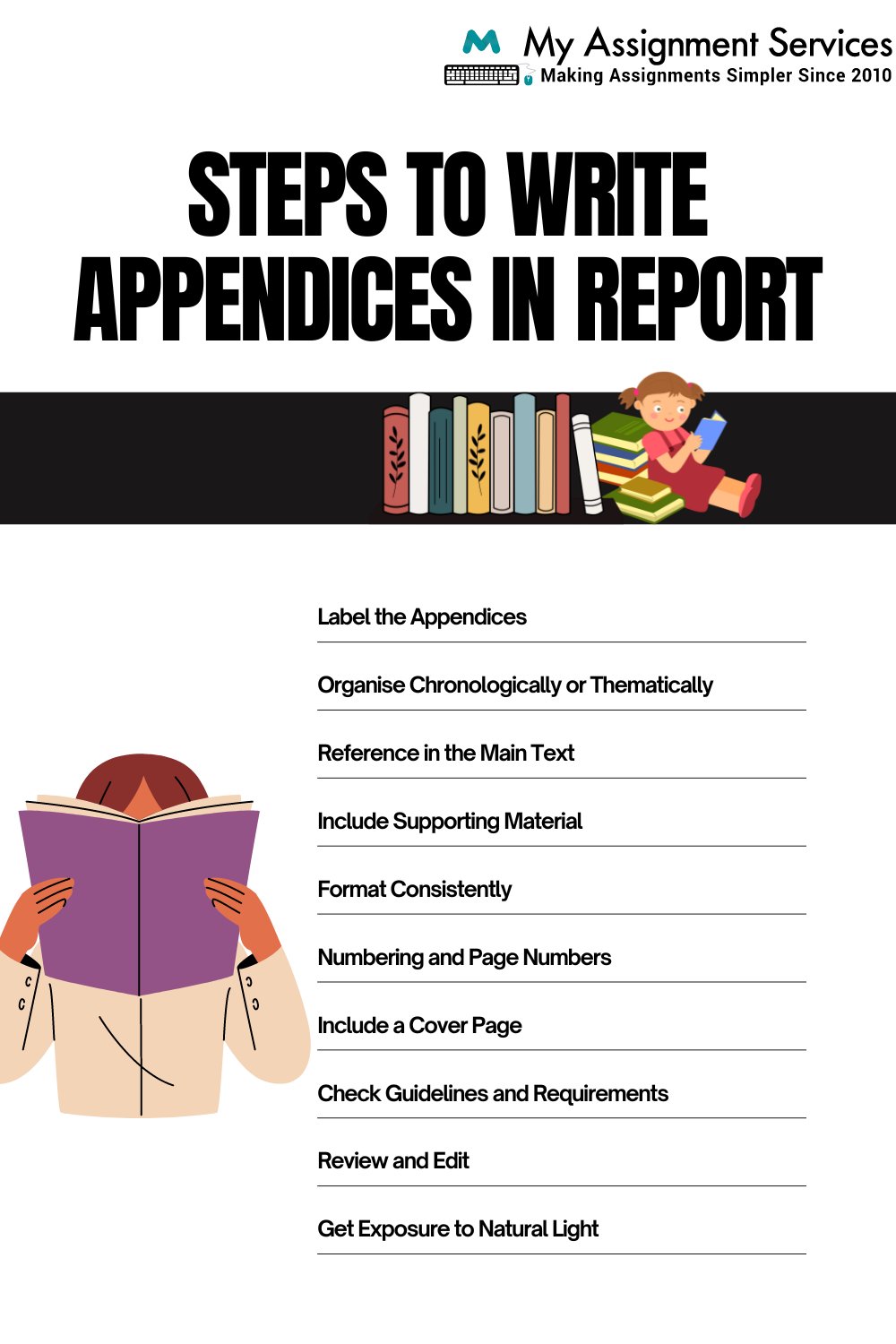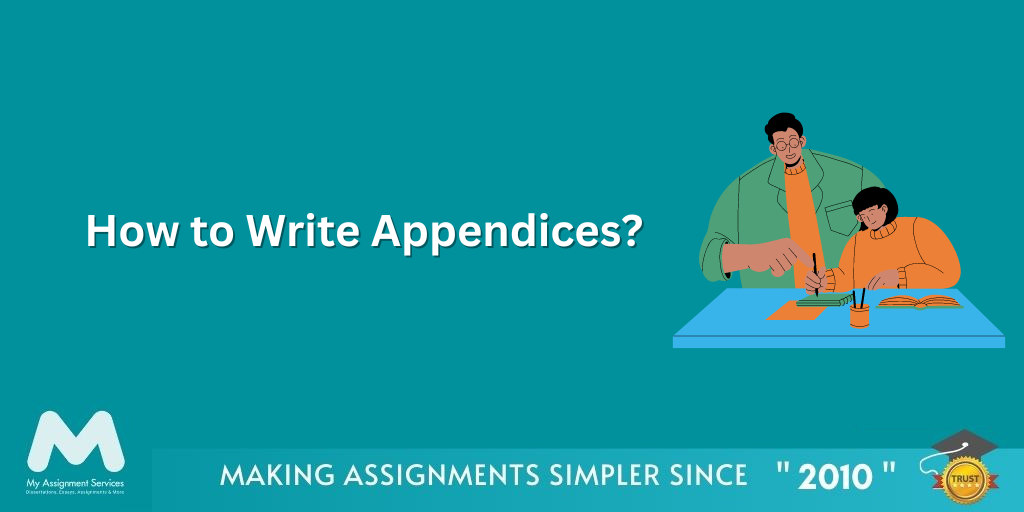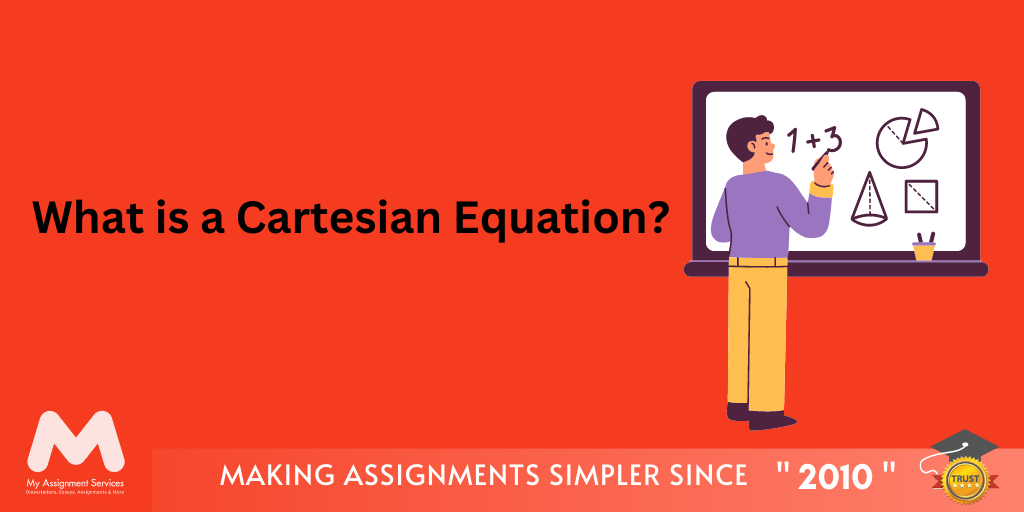Are you also stuck in appendices and don't know how to write appendices? If yes! You have landed on your ideal page.
Furthermore, similar to the human body's appendix, an appendix in a document provides supplementary information that is not essential to the main content. Therefore, it can encompass a reference section, raw data summary, or extra details on the methodology employed. Whether mandated for a school assignment or chosen for a personal project, creating an appendix involves collecting relevant content and ensuring proper formatting. Subsequently, refining the appendix is essential to make it accessible, useful, and engaging for the reader.
Moreover, appendices are generally used in academic writing, so students might have to prepare them for academic papers at some point. It includes anything helpful to the audience or reader but invalid to the topic's progression. Likewise, these may contain charts, maps, videos, graphs or even detailed explanations too lengthy for the body of the paper.
However, in this write-up, we will discuss all the precise details how to write appendices in report and structure informative and effective appendices.
What is an Appendix in a Paper?
Appendices in academic writing serve as sections after the document, containing supplementary information on the topic that, while not essential, can benefit the reader while searching for suitable research paper assignment help. Furthermore, the critical aspect is the nonessential nature of the content, as any vital information should be integrated into the main body of the paper. Likewise, the paper should maintain coherence and comprehensibility without referencing the appendices.
Furthermore, the number of appendices a paper includes depends on their utility and can vary in type. For instance, the initial appendix might consist of a spreadsheet, while the subsequent one could feature a scanned letter.

Steps How to Write Appendices in Report?
While writing appendices, appending supplementary material, such as charts, graphs, or detailed information, in a report is a common practice. However, here are the steps to write appendices in a report to get high distinction grades.
1. Label the Appendices
Labelling the appendices is crucial for ensuring clarity and organisation within your report. Furthermore, each appendix should be assigned a distinct label, such as "Appendix A," followed by a title that succinctly describes its contents. Likewise, this straightforward labelling system aids readers in locating specific supplementary material quickly and efficiently.
2. Organise Chronologically or Thematically
The organisation of your appendices depends on the nature of the content they contain. However, while writing appendices in report, if your supplementary material follows a chronological order, arranging the appendices accordingly enhances the coherence of your report. Alternatively, grouping them thematically allows readers to navigate and comprehend related information easily.
3. Reference in the Main Text
Integrating references to the appendices within the main body of your report is essential for guiding readers to additional or detailed information. Moreover, demonstrate where readers can find relevant material, such as, "Refer to Appendix B for supporting charts and graphs." However, whenever you think about, ‘ how I will do my assignment’, use these approaches and create a seamless connection between the main text and the supplementary content.
4. Include Supporting Material
Each appendix should provide supporting material that complements and enriches the main content of the report. Furthermore, ensure that the information included is directly relevant to the report's objectives. However, this can encompass raw data, detailed calculations, images, or any content contributing to a comprehensive understanding of the topic.
5. Format Consistently
Consistency in formatting is key to presenting a polished and professional report. Therefore, while writing appendices, ensure that the appendices should use the same font, font size, and spacing as the rest of the document. A uniform format also extends to headers, footers, and other stylistic choices, contributing to a visually cohesive presentation.
6. Numbering and Page Numbers
Numbering the pages within each appendix helps readers navigate through the supplementary material. Hence, if your report is extensive, consider using section numbering (e.g., A.1, A.2) for a more organised structure. Likewise, indicate page numbers on each appendix and include this information in the table of contents if applicable.
7. Include a Cover Page
While writing appendices in report, start each appendix with a cover page that provides essential details. Moreover, this page typically includes the appendix's title, a brief description of its contents, and any other pertinent information. Thus, it helps readers understand the purpose and relevance of the supplementary material.
8. Check Guidelines and Requirements
Adhering to specific guidelines and requirements is crucial. Furthermore, different institutions or organisations may have distinct formatting standards for appendices. Therefore, ensure that you follow these guidelines meticulously to meet the expected standards for your report.
9. Review and Edit
Before finalising your report, thoroughly review each appendix like a professional assignment writer. Thus, it will help you to ensure the content is clear, concise, and directly contributes to the report's objectives. Moreover, editing for coherence and readability is essential, and any necessary adjustments should be made to enhance the overall quality of the appendices.
10. Cross-Reference
If you've incorporated cross-references between the main body of the report and the appendices, verify their accuracy. Furthermore, double-check that these references guide readers to the correct appendix and specific information. However, this will reinforce a seamless connection between the two sections of the document.
Wrapping It Up!
Let's wrap up our discussion on writing appendices! When writing appendices, it's crucial to highlight the importance of adhering to APA, Chicago, and MLA formats. As demonstrated, referring to an example of an APA appendix can help you master composing a paper appendix. Therefore, creating an appendix becomes simple once you understand the specific formats and guidelines.
Moreover, memorising the format allows you to produce accurate appendices for various papers, essays or dissertations. Trust My Assignment Services emphasises that proficiency in this area is essential for preparing appendices for reports or other academic works.
If you need additional academic support, explore our resources on article review writing. We are here to assist you at every stage of your academic journey.





